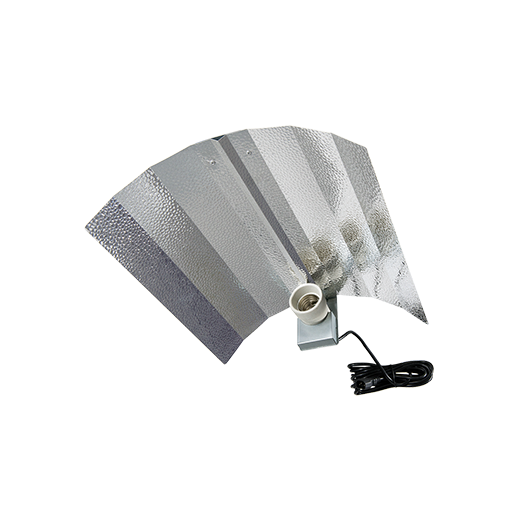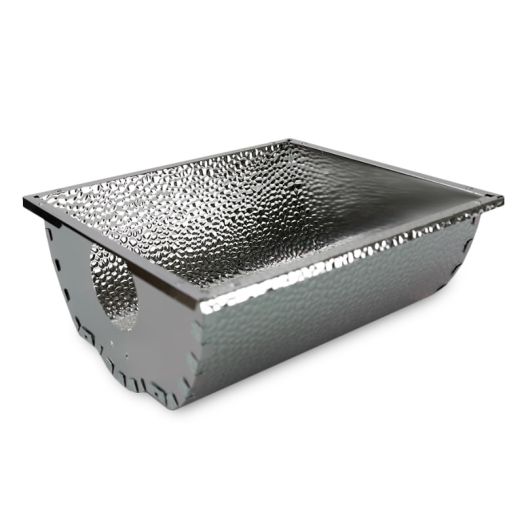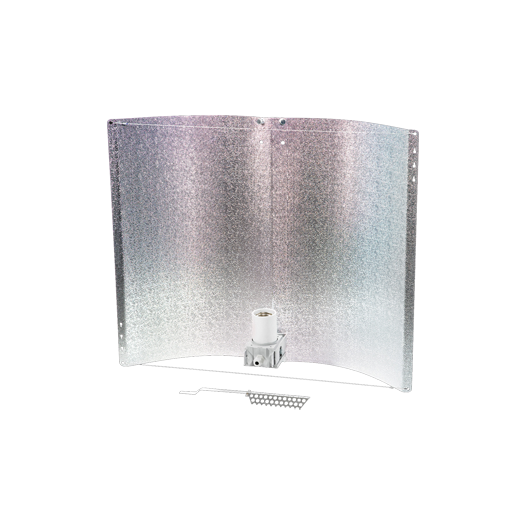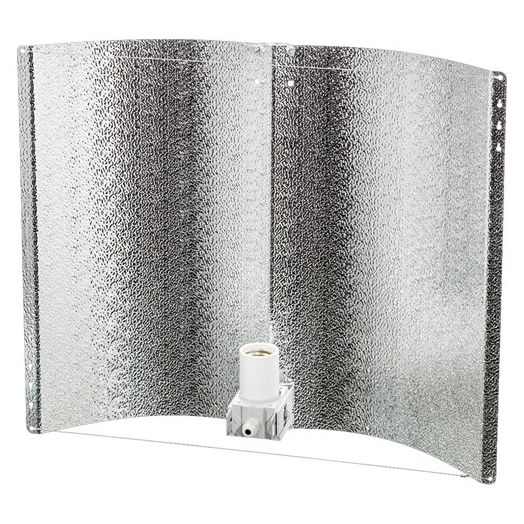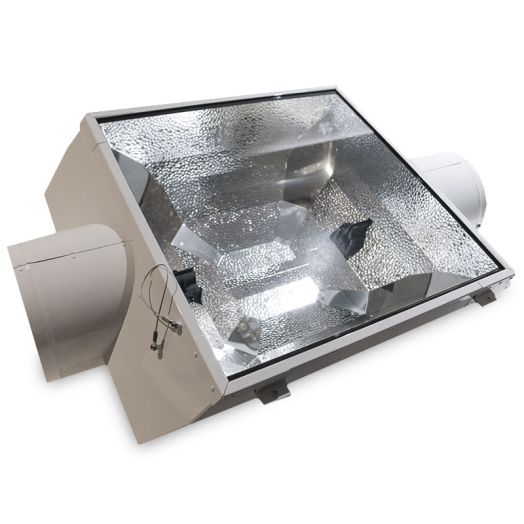Reflectors

Your reflector helps increase your garden’s efficiencies by directing photons from your grow bulb down towards your plants. With high intensity discharge (HID) and fluorescent bulbs the light is emitted in all directions - without a reflector, as much as half of this light is wasted bouncing around the top of the tent. Different reflectors have different shapes of spread - make sure you choose one whose footprint suites the space you intend to put it in. For more information on hydroponic reflectors, read our buyers guide below.
Grow Light Reflectors
Reflectors boost your yields by directing photons that would otherwise be lost onto the canopy of your plants. Your spending money on the electricity to produce light, why waste it?
There are many types of reflectors that are suitable in different agricultural conditions. In terms of what suites your space the best, reflectors tend to have a trade off between footprint and intensity; you’ll want to cover your garden with an equal spread of light so all plants get a uniform exposure to photons but also maintain enough light throughout to facilitate healthy plant growth.
Open-ended reflectors
Open ended reflectors have two reflective panels that extend out along the length of the bulb - they allow the majority of light to be reflected down and the open sides allows heated air to escape where it can be removed by your extraction.
Many reflectors allow the footprint and intensity to be changed on the fly. Despite the budget nature of euro reflectors, they can easily be bent into any shape, so the photons can be reflected into the footprint required. This would be less uniform than premium brands of reflector such as adjust-a-wings, which balance the spread between the two reflective wings at the side.
Closed-end reflectors
Closed end reflectors have an additional 2 side panels when compared to open-ended reflectors so more light is directed down onto the canopy. Closed end reflectors have the potential to cause more of a heat issue than closed end reflectors, but if you can deal with the heat the increased reflectance may be worth it due to the increased yield associated with higher light levels.
Air cooled reflectors
Air cooled reflectors are of a similar construction to closed end reflectors with the inclusion of a glass panel along the bottom and a spigot on either side of the reflective wings. You can attach a fan and ducting to the reflector to make it fully enclosed and airtight - allowing the heat generated from the bulb to be removed from your indoor garden leading to a cooler-running room; which is especially useful in summer when temperatures can soar above optimal ranges.
If your reflectors are getting a limescale build-up it’s because you’re using a humidifier without filtering your water through a reverse osmosis filter. The carbonates condense on the reflector and reduce it’s reflectance. Reflectors will naturally become less reflective over time as the surface oxidises and dirt, dust and grease coats the reflector reducing its efficiency - but not as quickly as when you use tap water in your humidifier.
Ideally, you should change your reflectors every 12 months - you’ll lose about 5% a year in a clean garden and up to 25% in a garden using tap water to humidify - it may end up costing more in lost yield than it would cost to replace a reflector.
For more information on grow light reflectors and what’s best for your budget and space requirements email us or call our specialist team on 0800 085 7995

